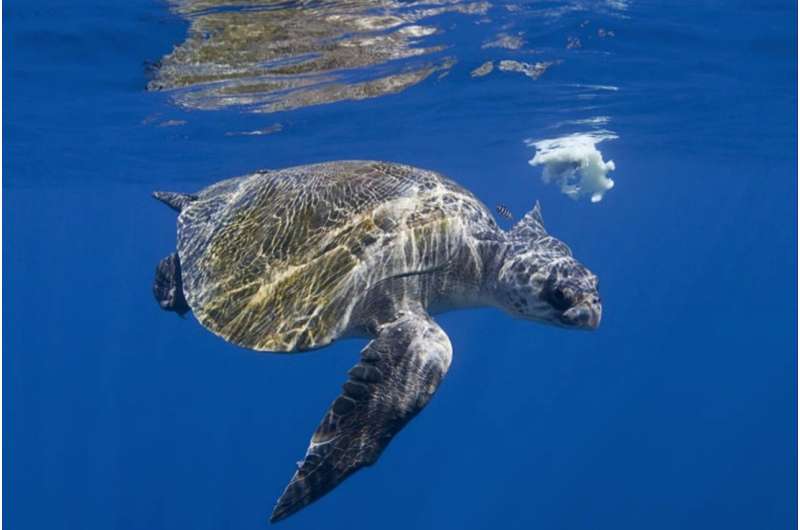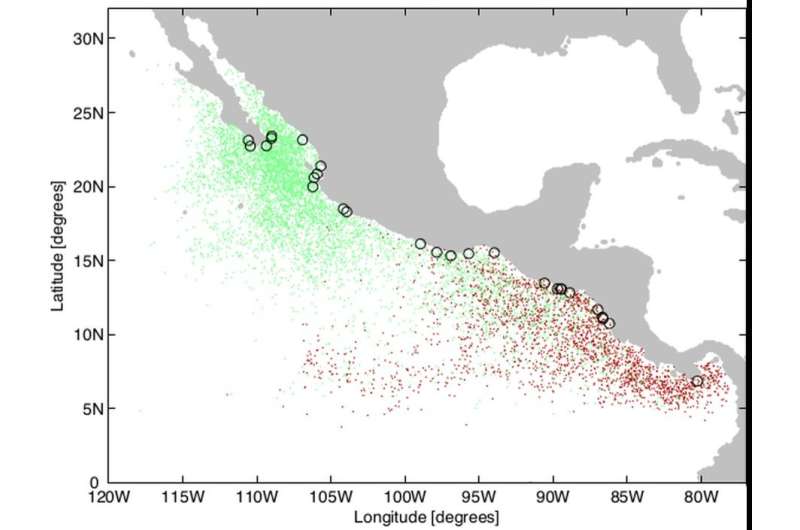Sea turtles like it local

New research has revealed how an endangered turtle capable of traversing big distances to find a mate may not do so due to seasonal ocean currents.
Contrary to other species of sea turtles, Olive Ridley turtles show high nomadic behaviour and very low fidelity to the beach they are born.
However they're less likely to journey large distances to find a mate when currents aren't favourable, a world-first study published in the Proceedings of the Royal Society B: Biological Sciences reveals.
Research led by marine biologists at Flinders University in Adelaide have studied Olive Ridley turtles across a large coastal region of the tropical eastern Pacific Ocean known to have complex ocean circulation.
They generated DNA data for more than 600 turtles collected at 27 nesting beaches in five countries, from Mexico to Panama.
Then they compared the connectivity across the region inferred from genetics with patterns predicted by models of current circulation for different seasons of the year.
"Surprisingly, we showed that connectivity is largely reduced in these turtles because of the influence of dynamic ocean circulation during the migration and mating seasons, but not in other periods of the year," says researcher Professor Luciano Beheregaray, leader of the Molecular Biolology Laboratory at Flinders University.

It shows that turtles found across vast oceanic regions show movement and mating preferences influenced by small differences in current circulation.
This suggests that turtles follow the currents and are adapted to seasonal oceanographic differences across the region, providing cost-benefit solutions that might be particularly advantageous for females during the breeding season.
Very little is known about movement patterns and mating preferences of large marine animals. Some can move across entire oceans and cross a variety of habitats during their lifetime.
This behavior spreads their genes and reduces differences between animals born in different regions – and this was thought to be the case for the Olive Ridley sea turtle.
This is the first study to show that these sea turtles, despite being capable of moving across very large distances, show connectivity reduced by their ocean environment.
"This finding is very relevant for the conservation management of this endangered species in the eastern Pacific, a region that represents the main area of reproduction of the species in the world," says co-author Dr. Clara Rodríguez-Zárate.
Sea turtles and other large marine animals are threatened by multiple human activities, including fisheries, pollution and climate change.
"Understanding how marine animals perceive their environment and how this impacts on their movements is essential for addressing human impacts and for informing conservation management", says Professor Beheregaray.
More information: Clara J. Rodríguez-Zárate et al. Isolation by environment in the highly mobile olive ridley turtle ( Lepidochelys olivacea ) in the eastern Pacific, Proceedings of the Royal Society B: Biological Sciences (2018). DOI: 10.1098/rspb.2018.0264
Journal information: Proceedings of the Royal Society B
Provided by Flinders University





















